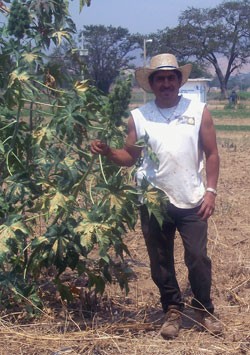
Challenge
Farmers on the 3,259 square kilometers of Oaxaca’s Central Valley struggle to raise their crops with limited amount of groundwater. And when Ricardo Sosa, president of his community farmer association, went to Mexico’s National Water Commission to request permission to dig more wells, he was turned down. The groundwater level had become drastically low because of drought, he was told, and overexploited by inefficient use. Under the traditional system of canal irrigation, up to half of the water never reached the field. Farmers never knew when they would receive water, or how much; it would flow for 12 hours, then not for months.
Initiative
In 2003, USAID helped strengthen the Groundwater Technical Committee of the Central Valley, which developed a system of efficient irrigation options for the region. In conjunction with the national and regional water commissions, USAID conducted workshops to educate farmers and local specialists about how to intensively produce organic vegetables and other basic crops while efficiently using water and energy resources. Farmers also learned about the causes and effects of watershed problems and how to adopt new technologies. The National Water Commission contributed half of the costs of constructing the new irrigation systems, and local municipalities and community organizations like Ricardo Sosa's each contributed 25 percent.
Results
Eighty of the 88 families in Ricardo Sosa's community now use the new, more efficient irrigation systems that are now available, including walking sprayers, sprinklers and drip lines. The income of these participating farmers has increased an average of 80 percent, and they have expanded their crops from just corn to fodder, beans and others. Farmers in the Central Valley now have a dependable, predictable flow of water, and the area’s underground water level has returned to previous, healthy levels.







Comment
Make a general inquiry or suggest an improvement.